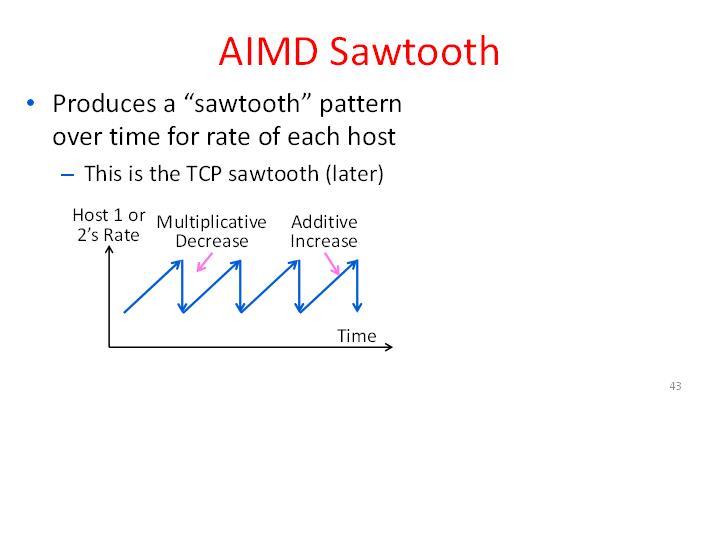Tutorial
In this tutorial, we'll walk through the process of implementing a very simple congestion control algorithm in CCP and then running and debugging that implementation in an emulator.
We'll be using Portus v0.3.3. The first part covering algorithm implementation is agnostic to datapath, but for the second part we'll be using the Linux Kernel datapath. Please let us know if you run into any problems during this tutorial by submitting a GitHub issue.
The focus here is to explain the CCP programming model, so we'll be implementing a very simple scheme: AIMD (additive-increase multiplicative-decrease). Before we even start talking about CCP, let's briefly go over exactly how the algorithm works and what kind of behavior we expect to see. We assume a basic familiarity with the problem of congestion control. If you need some background, Van Jacobson's paper is a good place to start.
AIMD Scheme
The high-level idea is to start with a low cwnd, and then as ACKs are received, probe for more bandwidth by continually increasing the cwnd (additively) until eventually a loss occurs, which signals congestion. We then cut our rate (multiplicatively) and repeat. If you were to graph the congestion window over time of a single flow running this scheme in the prescence of a droptail buffer, it would exhibit the classic "sawtooth" behavior:

Specifically, we'll use the following algorithm:
- On each ACK, increase CWND by 1/cwnd (this has the affect of increasing the cwnd by roughly 1 packet per RTT)
- On each loss, cut CWND by 1/2